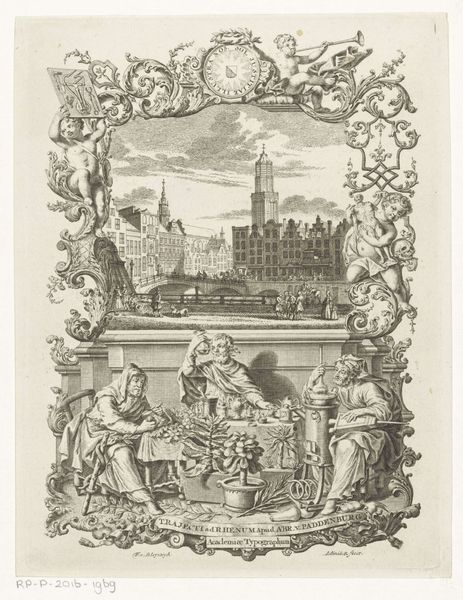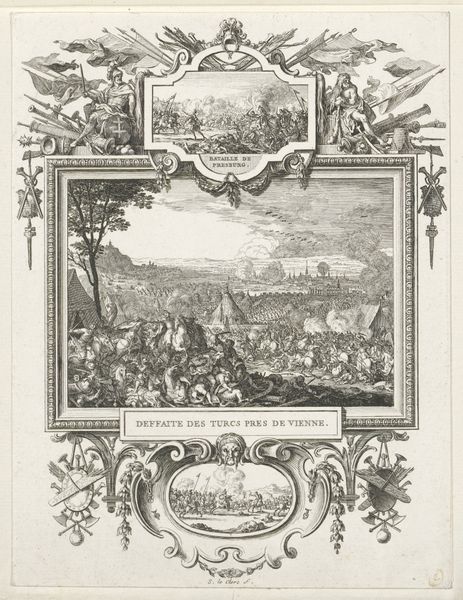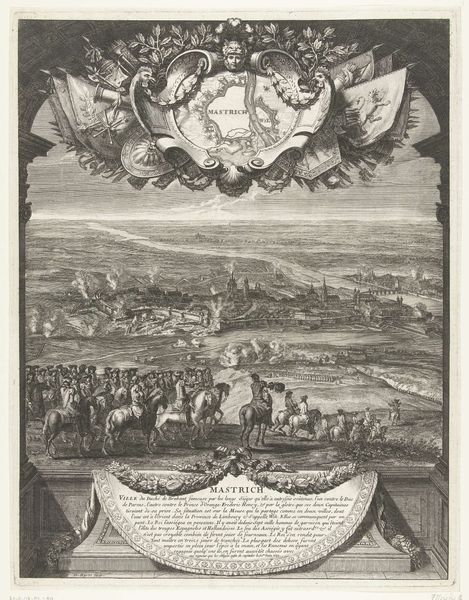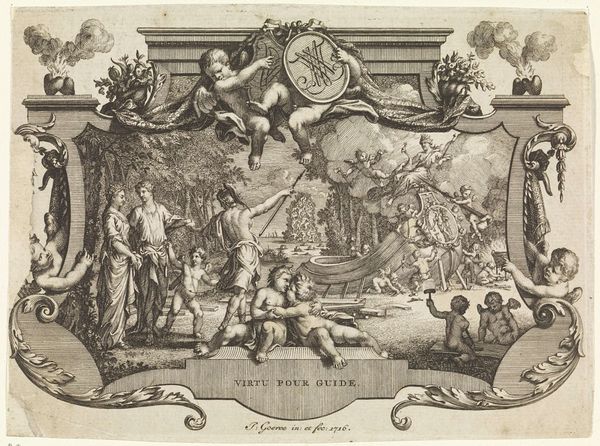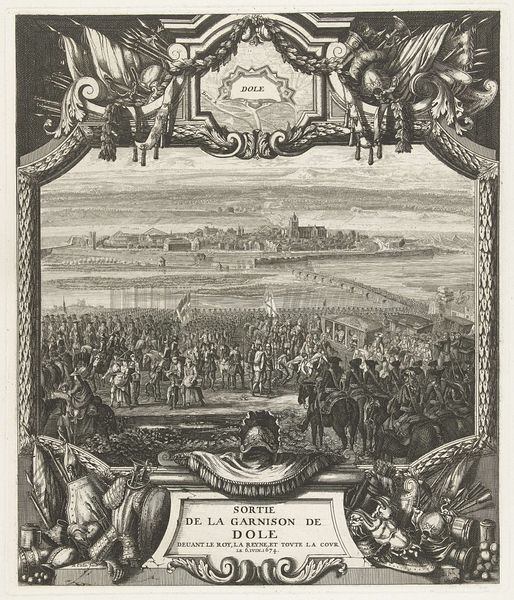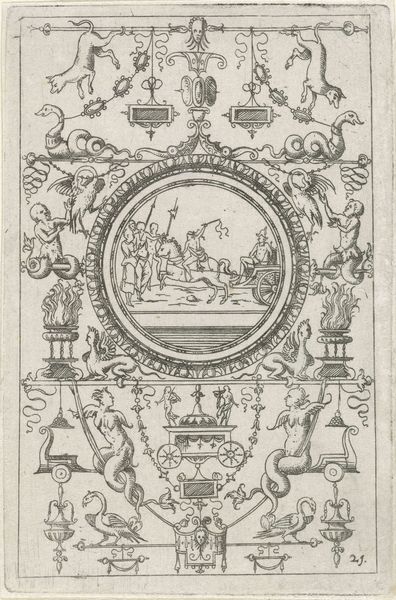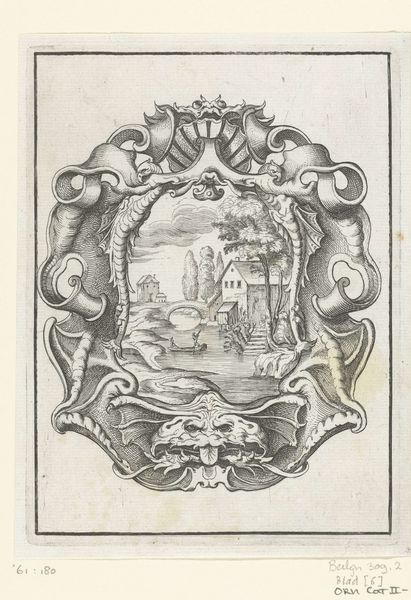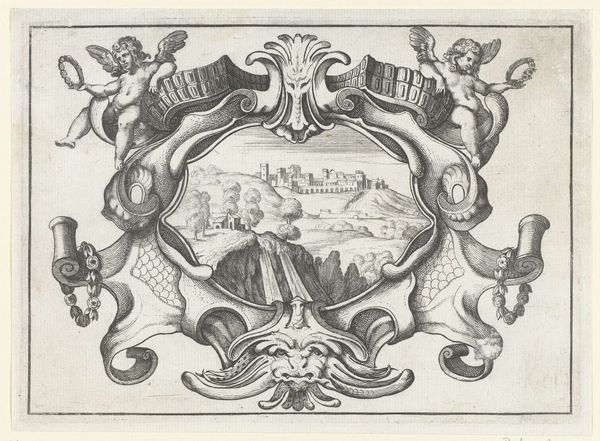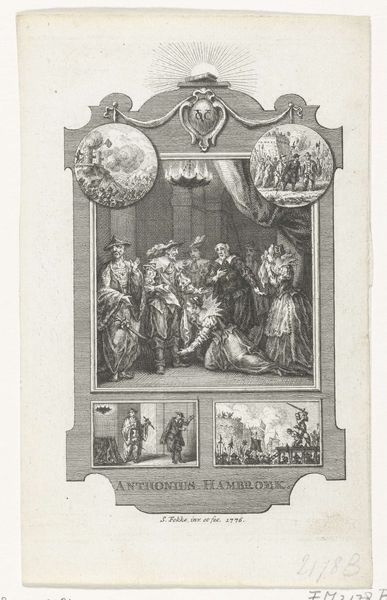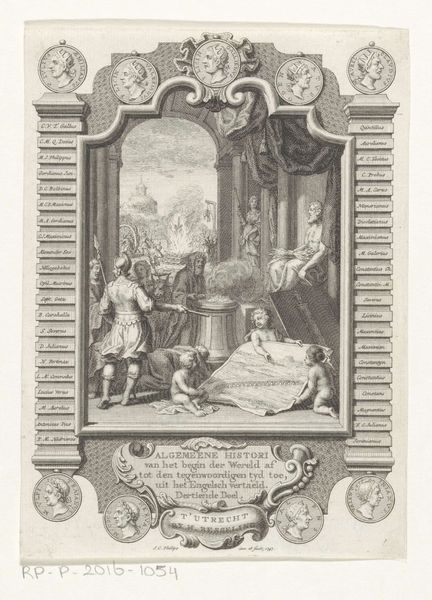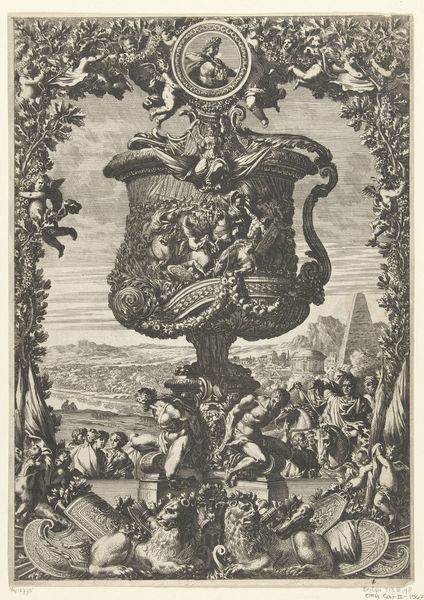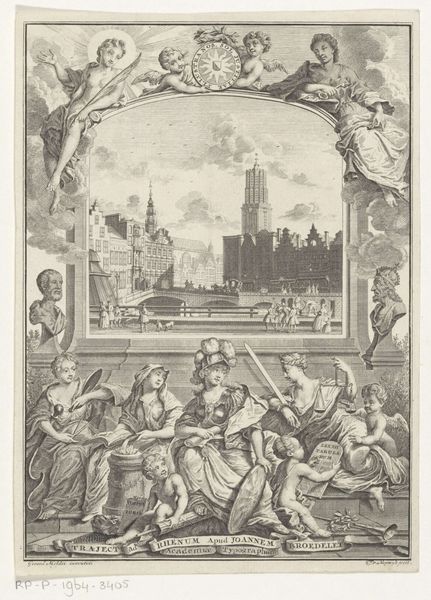
Gezicht op Utrecht en allegorie met Minerva en deugden 1728 - 1771
0:00
0:00
drawing, ornament, print, etching, pen, engraving
#
portrait
#
drawing
#
ornament
#
allegory
#
baroque
#
pen drawing
# print
#
pen illustration
#
etching
#
old engraving style
#
landscape
#
figuration
#
line
#
pen
#
cityscape
#
history-painting
#
engraving
#
realism
Dimensions: height 230 mm, width 181 mm
Copyright: Rijks Museum: Open Domain
Editor: This print, "View of Utrecht and Allegory with Minerva and Virtues," is attributed to Noach van der Meer the Elder, created sometime between 1728 and 1771. It’s an etching, with pen and engraving—a combination of cityscape and symbolic figures. I'm struck by how the detailed rendering of Utrecht seems to contrast with the more theatrical allegory below. What do you see in this piece? Curator: I see a deliberate commentary on power and knowledge, carefully constructed within its historical context. The cityscape provides a literal grounding, while the allegory invites us to interpret Utrecht's identity. Minerva, the Roman goddess of wisdom and strategic warfare, takes center stage, and her presence suggests the city’s aspiration towards intellectual and martial strength. How do you think the surrounding virtues contribute to that aspiration? Editor: I guess they embody different aspects of a virtuous and powerful city—justice, prosperity, artistic excellence. But why combine them in a single image? It seems like a rather grandiose claim. Curator: Exactly! The artist constructs an idealized version of Utrecht, projecting civic pride and ambition. Considering the time period, think about the political and economic struggles, and how the print’s symbolism served as a form of cultural propaganda. What social functions might art serve? The composition blends realism with idealization, shaping a specific narrative. What’s more: whose narrative is being constructed? And whose narratives might be actively suppressed? Editor: So it's not just a depiction of Utrecht but an argument about what Utrecht *should* be, presented through a very specific lens. It almost makes the cityscape seem like a backdrop to this ideal. Curator: Precisely. And who are the intended viewers? Likely affluent citizens, members of the elite classes who had the power to act on—or reject—this vision. The work prompts us to reflect on who benefits from these idealized images, and at whose expense. Editor: It really changes how I see it now. I was initially drawn to the detailed landscape, but the allegory becomes the central point of an argument about civic identity. Curator: Indeed. It underscores the necessity of interrogating any representation, identifying its claims, and understanding whose interests it ultimately serves.
Comments
No comments
Be the first to comment and join the conversation on the ultimate creative platform.
